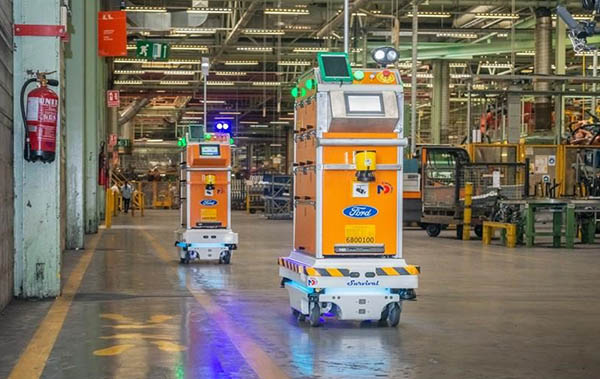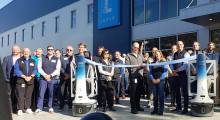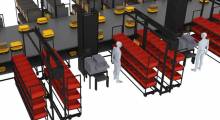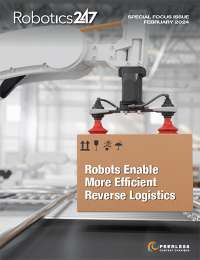Artificial intelligence, robotics, and related technologies have found a place in online retail. In fact, e-commerce providers such as Amazon.com, Asos, and Zalando have found AI and deep learning departments essential.
Why do they invest in machine learning (ML)? It can helps them better understand their clients, customize offers for particular buyers, and automate manual tasks.
Machine learning allows online stores to be upgraded with smart on-site search, personalized ads, and intelligent chatbots. That’s why you should integrate it into your website, the Magento ”headless commerce” architecture or a headless platform on another content management system (CMS), or even in brick-and-mortar store.
Here are three ways to use machine learning and robotics to assist e-commerce.
1. ML enables vision-guided picking
Vision systems and robotics have come together for industrial applications. Regular robots that aren’t equipped with an advanced perception system require certain conditions. For example, the work environment must be fixed, and the robot should always proceed to a predetermined position.
How can a robot move to where it’s needed? Picking systems require high-precision sensing to locate objects to manipulate.
Today, vision-guided robots (VGR) are rising in popularity. They include the following capabilities:
- Recognizing an object with cameras or other sensors
- Determining the item's shape and position in space
- Picking and transferring the item to a target point with robotics hardware
A seemingly simple task requires complex AI and ML technologies. VGRs are commonly used to locate objects on a conveyor belt. How does this help e-commerce companies? Most vision-guided picking occurs in warehouses.
For example, the RightPick system from RightHand Robotics uses AI to autonomously handle thousands of SKUs from totes, bins, boxes, and cases. The hardware consists of an intelligent gripper, a high-performance industrial PC, and a robot arm.
Advanced automation systems can help online stores keep up with product flow and ensure customer satisfaction. For example, Paltac Corp., a major wholesaler of consumer packaged goods in Japan, has streamlined its picking processes with the help of RightHand Robotics.
2. AI manages mobile robot fleets
As manufacturers and supply chains adopt automation, they need to control and manage their growing fleets of autonomous mobile robots (AMRs). Fleet management systems (FMS) from the robot vendors or third-party software providers can help.
An FMS allows users or operators to centrally supervise numerous mobile robots from multiple devices via standard communication protocols. They can use devices incuding laptops, tablets, or smartphones to access the robots from anywhere, not just the shop floor.
What benefits can an FMS provide? First, it helps avoid bottlenecks and downtime, ensuring 24/7 AMR operation throughout a facility.
For instance, Mobile Industrial Robots' MiR Fleet software offers an intuitive Web interface for programming and monitoring. How does it work?
- MiR Fleet assigns priorities to several robots and coordinates their actions.
- The software allocates the tasks among the mobile robots to complete the job in the least amount of time.
- It also guarantees that the mobile robots move to a charging station and charge up between tasks, reducing downtime.
- The smart system allows users to have multiple levels of access.
MiR Fleet is equipped with cameras to control robot traffic patterns. Coupled with advanced learning algorithms, the system analyzes anonymized data to determine the objects in the area, such as people, forklifts, or other mobile equipment.
MiR's AMRs receive this information from the cameras, which improves their awareness of their surroundings and allows them to change their behavior even before entering an area. Thus, the robots use AI and ML to avoid high-traffic areas, such as where goods are regularly transported and transferred by fork truck or where large groups of workers are present.
MiR robots are already at work at Toyota, Ford, and other companies in over 60 countries.
3. AI enables robots to collaborate with human workers
How can e-commerce businesses handle the ever-growing number of orders? Recruitment and retention of workers for repetitive tasks has become more difficult during the COVID-19 pandemic.
As online shopping doesn’t show any sign of slowing down, more merchants are applying robots to order picking. At the same time, people are still needed for upstream and downstream processes. That’s where collaborative robots, or cobots, come into play.
Collaborative robot arms and AMRs are different from industrial robots because they include sensors and programming to avoid dangerous interactions with humans. They are also potentially easier to operate, reducing the need for technical experts in production. Cobots include the following features, depending on the application:
- Safety-monitored stop: Such safety systems disable a robot when a human enters the work envelope, or the robot's operating area. This is designed for applications that require little interaction between the robot and personnel.
- Speed and separation monitoring: Such robots use more powerful vision systems than safety-monitored stop to slow down operations when a person approaches and stop when a worker is too close to the robot.
- Power and force limiting: These cobots are designed with rounded corners and several collision sensors. They have force limits to avoid injury.
- Hand guiding: In this case, an operator can control the robot’s motion directly rather than using a teach pendant. If the robot is in automated mode, it responds only to the operator’s direct control input. It allows the robot to reduce the operator’s repetitive-stress injury risk.
Unlike other autonomous systems, cobots and collaborative AMRs are designed for constant work alongside human workers. One example is DHL, which keeps pace with e-commerce demands by using collaborative picking technology from Locus Robotics.
The global logistics provider uses more than 500 assisted picking robots in its warehouses in the U.S., Europe, and the U.K., and it plans to increase that number this year.
AI, ML, and robotics are already helping the e-commerce industry meet customer expectations for rapid and accurate order fulfillment. Vision-guided picking, fleet-management systems, and collaborative robot arms and AMRs have matured and are helping businesses be competitive.
This is only the tip of the iceberg, and we'll see how online retailers realize these technologies' full potential.

About the author
Alex Husar, is chief technology officer at Onilab, with more than eight years of experience in developing progressive Web apps, Magento migration, and Salesforce development. He graduated from the Czech Technical University and obtained a bachelor’s degree in computer software engineering. Husar’s expertise includes both full-stack development skills and the ability to provide guidance to an entire project team.
Article topics
Email Sign Up






















